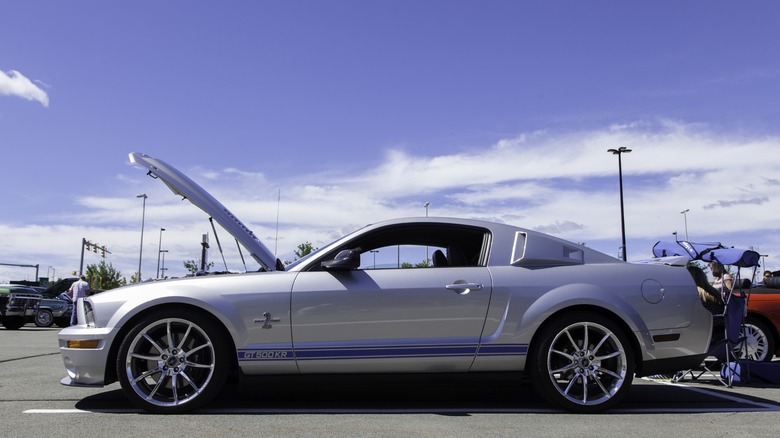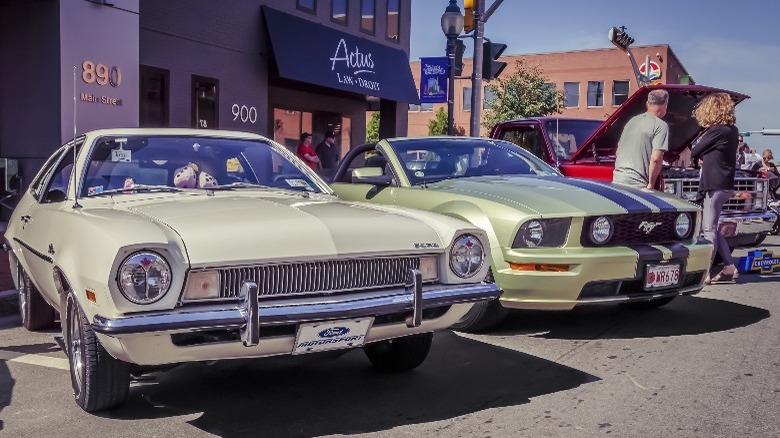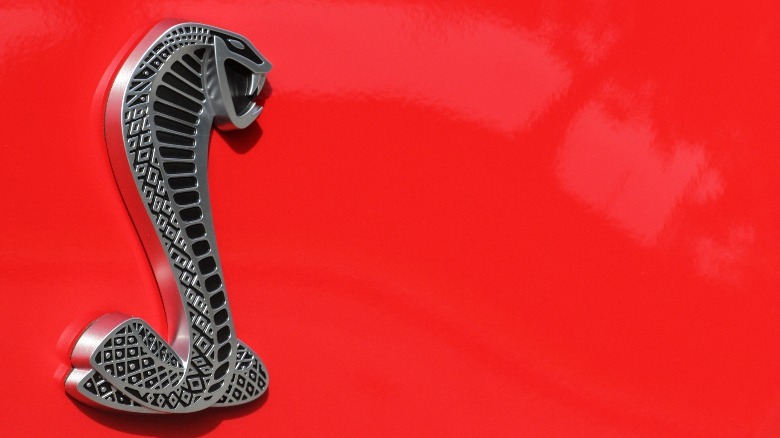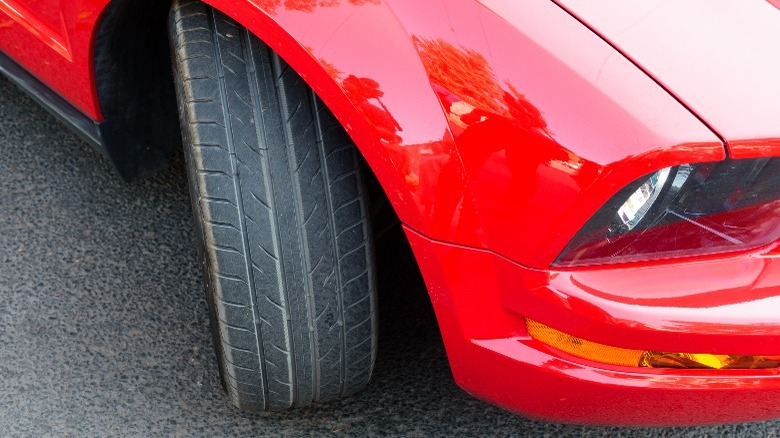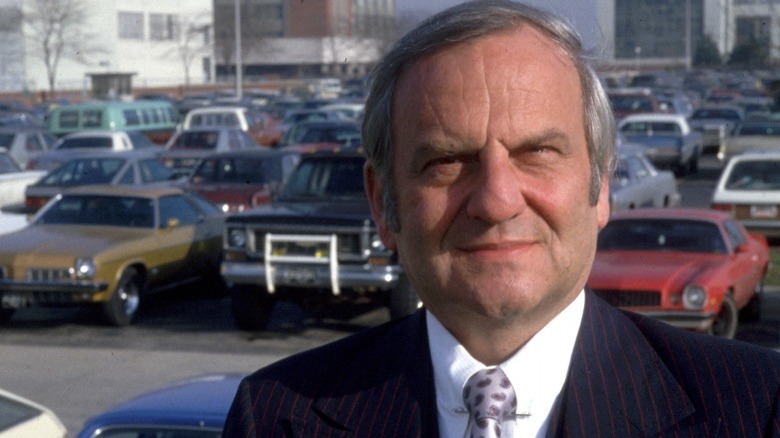Everything To Know About The S197 Mustang
The fifth-generation Mustang, codenamed S197, stands out in the recent Mustang lineup as one with strong inspiration from the 1960s. Thanks to its retro-futuristic design, some argue that this might be one of the best-looking, if not the best-looking, Mustang generation of all time. It came as a pleasantly surprising deviation from the New Edge SN95 Mustang, which looked like it was propelling the pony car into a more contemporary style.
Sales for this Mustang generation started in 2005 and ended in 2014. While the S197 didn't do as well in the market as all its predecessors, it still holds up as a budget-friendly car among enthusiasts, striking a balance of performance, retro styling, and affordability. It's earned its name through fame, making an appearance in "I Am Legend" with Will Smith, and through infamy, like all the memes about Mustangs crashing into crowds at car meets (many of those videos are S197s).
But, famous or infamous, the car is part of one of Ford's most iconic car series, and its story reflects that. Every generation of the Mustang has a different lore, design, and performance package in it. Let's get down to business and tell you all you need to know about the fifth in the Ford Mustang line, the S197.
A nostalgic design revival
When Ford unveiled the S197's GT concept at the North American International Auto Show in Detroit two decades ago, it wasn't the 400-hp supercharged engine that drew on muscle car lovers' heartstrings. Instead, it was the design.
Ford used the D2C platform (D-class two-door coupe) for the first time, which was a rear-wheel drive solid axle platform it devised from the originally planned DEW98 (used in the Ford Thunderbird). It's a platform that was deemed too expensive for the budget-friendly car. At least Ford's money-pinching ways were used as a force for good instead of trying to make the Ford Mustang an economic front-wheel drive, like the attempt with the Fox-body SN95.
Ford's chief designer, J. Mays, gave us a car that wore the traditional Mustang design features: the tri-bar taillights, side C-scoops, long muscular hood, and that beloved fastback profile. However, not all the S197 Mustang models look the same. After 2009, Ford revisited the design to make a "second generation" S197. This new design had a more aggressive fascia and less pronounced C-scoops, among generally more modern features to keep up with the times.
As for the interior, Ford kept it simple — perhaps a little too simple, even — especially with the '05 to '09 Mustang. There are a lot of plastics in the dash and leather door panels (which are notorious for peeling off in the heat). But its cockpit-style gauge cluster and strong lines make it an attractive option for those trying to key into the old muscle car aesthetic.
An array of various trim options
The S197 came in a number of trims with options ranging from year to year. These are the trims for the 2005 to 2009 models:
- Base V6: 210-horsepower 4.0-liter V6 with a basic interior.
- GT: 300-hp 4.6-liter V8 with upgraded suspension and exterior fog lights.
- Shelby GT500 (2007 to 2009): 500-hp 5.4-liter V8 with improved handling and unique Shelby styling.
- Bullitt (2008 to 2009): 315-hp 4.6-liter V8 inspired by the 1968 Mustang from the "Bullitt" movie.
- GT California Special (2009): 300-hp 4.6-liter V8 with unique California Special badges and designs.
From 2010 to 2014, Ford made general improvements to the Mustang — especially in terms of power. The most noticeable upgrades happened after 2010, however. Take a look:
- Base V6 (2010): 210-hp 4.0-liter V6 and updated styling.
- Base V6 (2011 to 2014): 305-hp 3.7-liter V6 with the new styling.
- GT (2010): 315-horsepower 4.6-liter V8 with better handling than the base model.
- GT (2011 to 2014): 412 to 420-hp (Coyote engine) 5.0-liter V8.
- Shelby GT500 (2011 to 2012): 550-horsepower 5.4-liter supercharged V8 with an aluminum block for weight reduction.
- Shelby GT500 (2013 to 2014): 662-horsepower 5.8-liter supercharged V8.
- Boss 302 (2012 to 2013): 444-horsepower 5.0-liter V8 engine built for the track.
- GT California Special (2011 to 2014): 412-horsepower 5.0-liter V8 engine with its own unique badges.
There were also other special editions, like the Warriors in Pink (breast cancer initiative) and the Roush and Saleen editions.
The last Mustang with a solid rear axle
After the final S197 Mustangs left production in 2014, Ford transitioned from the traditional solid rear axle suspension to a more contemporary independent rear suspension (IRS) in its subsequent models. This shift marked a significant departure from a long-standing design ethos, as the solid rear axle had been a mainstay in Mustangs since their inception in 1964, with the notable exception of the SN95 Cobra SVT. The termination of this engineering practice with the S197 era heralded a new chapter in Mustang design.
The solid rear axle configuration in S197 Mustangs offers several benefits: it provides superior launch characteristics due to reduced wheel hop, simplifies maintenance and repairs due to its less complex structure, and gives an edge in drag racing because of its enhanced stability and power delivery in a straight line. However, these advantages are counterbalanced by some inherent drawbacks. The solid rear axle can lead to diminished handling capabilities, especially in cornering, as it doesn't allow for independent wheel movement. This limitation can result in compromised traction on uneven surfaces and a generally stiffer, less forgiving ride quality.
In terms of suspension setup, all S197 Mustangs, including the track-focused Boss 302, are equipped with MacPherson strut front suspension and a live rear axle supported by a three-link system. This configuration strikes a balance between performance and simplicity, catering to both the demands of performance enthusiasts and the practical considerations of everyday driving.
Ford and Iaccoca celebrated their 45th anniversary together with this car
You might find all 2009 Mustang models have a special 45th-anniversary badging near the two front wheels. That's because Ford used the 2009 Mustang to celebrate 45 years of the car's legacy. Many of the flagship cars don't get any unique power upgrades, so the badging is purely cosmetic.
However, it wasn't just Ford celebrating 45 years with the Mustang, but also Lee Iaccoca, the legendary automobile executive dubbed the Father of the Mustang. 45 Mustangs were made to commemorate this event, and these didn't just have a different look; they also had special performance boosts to back it up.
It's called the Iacocca Silver 45th Anniversary Edition Ford Mustang, and it was made with lighter aerospace materials than other Mustangs. As the name implies, the exterior is in a unique silver color, while the interior has a black finish. It came with a 320-hp or optional 400-hp (supercharged) engine, and it started selling for about $90,000.
